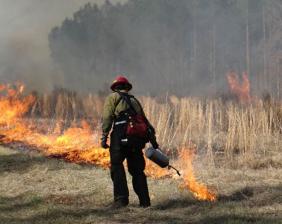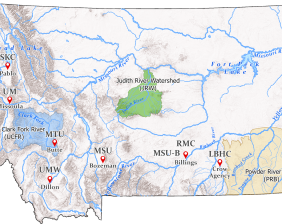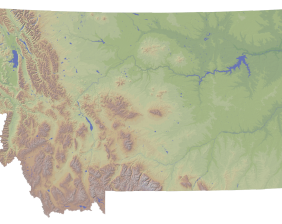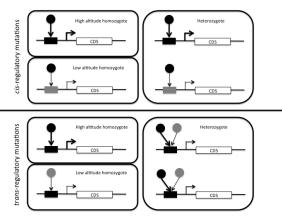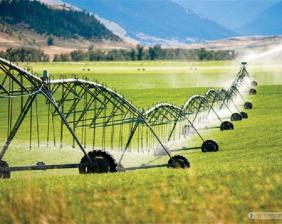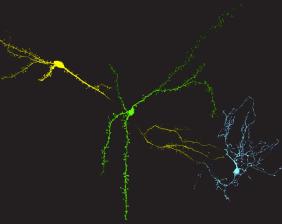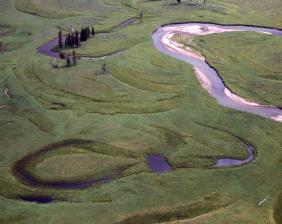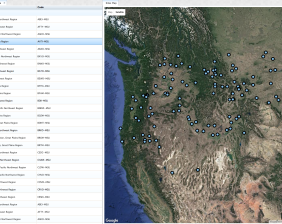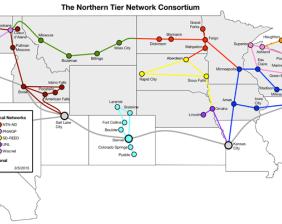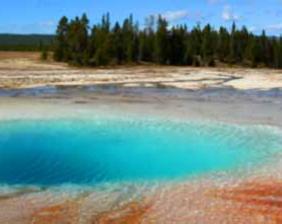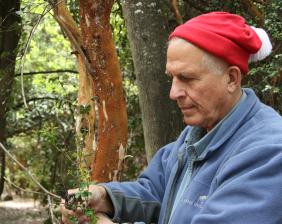SMART FIRES: Sensors, Machine Learning, and Artificial Intelligence in Real Time Fire Science
Sensors, Machine Learning, and Artificial Intelligence in Real Time Fire Science (SMART FireS) is a partnership among Montana State University, University of Montana, Salish Kootenai College, Little Big Horn College, Montana Technical University and Flathead Valley Community College. The vision of this partnership is to expand jurisdictional research capacity in order to address knowledge gaps associated with prescribed fire usage and to understand prescribed fire’s impact on individuals and communities.
Consortium for Research on Environmental Water Systems (CREWS)
The Consortium for Research on Environmental Water Systems (CREWS) is a five-year, $20M NSF EPSCoR RII Track-1 partnership between the University of Montana, Montana State University, Montana Technological University, Salish Kootenai College, Little Bighorn College, and business and government partners to study Montana’s environmental water systems and specific water quality issues.
Natural Resource Supply Chain Optimization using Aerial Imagery Interpreted with Machine Learning Methods
The University of Montana and the University of Alaska, Anchorage will conduct scientific research that is responsive to the needs of their natural resource based economies
Building Genome-to-Phenome Infrastructure for Regulating Methane in Deep and Extreme Environments
The NSF awarded a total of $6 million in August 2017 for a collaboration at MSU as well as the South Dakota School of Mines and Technology and the University of Oklahoma. The project’s abbreviated name is BuG ReMeDEE (pronounced “bug remedy”).
Using Natural Variation to Educate, Innovate, and Lead
UM partnership with University of Nebraska Lincoln focused on understanding how organisms function in complex environments and how they acclimate and adapt to environmental challenges.
Water, Agriculture, Food, Energy, Research Nexus
A regional interdisciplinary team led by Montana State University with the University of Wyoming and University of South Dakota to develop new innovations at the intersection of food, energy and water systems while training the next generation of scientists.
Neural Basis of Attention
Montana State University is a partner in neuroscience research on attention with New Hampshire, Rhode Island, and Nevada.
Strengthening structural biology research with single particle cryo-electron microscopy (cryo-EM)
RII Track-4: Strengthening structural biology research with single particle cryo-electron microscopy (cryo-EM). The fellowship will provide the PI with training on Cryo-EM and associated techniques, which will be used in his work on the analysis of the structure and function of specific proteins.
Governing Social-Ecological Transformation across Working Landscapes
RII Track-4: Governing Social-Ecological Transformation across Working Landscapes. The goal of this research is to better understand the potential for human-led transformations of degraded agricultural systems across the U.S.
Infrastructure via Science and Technology Enhanced Partnerships III
Montana research on ecosystems from microbes to landscapes, including creation of the Montana Institute on Ecosystems (IoE)
Cyberinfrastructure for a Virtual Observatory and Ecological Informatics System
This collaborative project between MT and KY and partners developed an integrated sensor and ecological informatics system through the use of modern cyberinfrastructure resources.
Montana Northern Tier Network (MT-NTN)
The Montana Northern Tier Network (MT-NTN) extends the reach and capability of the Montana University System’s (MUS)fiber network. It improved the research and education connectivity access across Montana.
Infrastructure via Science and Technology Enhanced Partnerships
Research on: 1) Hydrogen and the environment and 1) large river ecosystems.
Infrastructure via Science and Technology Enhanced Partnerships
Research on: 1) biomolecular structures, 2) neuroscience, 3) bioengineering, and 4) nano materials
Montana EPSCoR’s Infrastructure: Cross-sectional Partnership Building for the Future
This award focused on Integrative Analysis of Complex Biological Systems (IACBS). Biomolecular Structure and Function (BmSF), and Nanosciences.
Montana Research Infrastructure Enhancement Program
This project targeted building Montana's scientific infrastructure in laser optics, structural/functional biology (biochemistry), and environmental/ecological sciences.
An Experimental Program to Stimulate Competitive Research: Phase B Implementation Plan in Montana
Montana was one of the initial EPSCoR states receiving a competitive award of $2.2M for five years. The period was extended to 1989 with additional funding.
SMART FIRES: Sensors, Machine Learning, and Artificial Intelligence in Real Time Fire Science
Sensors, Machine Learning, and Artificial Intelligence in Real Time Fire Science (SMART FireS) is a partnership among Montana State University, University of Montana, Salish Kootenai College, Little Big Horn College, Montana Technical University and Flathead Valley Community College. The vision of this partnership is to expand jurisdictional research capacity in order to address knowledge gaps associated with prescribed fire usage and to understand prescribed fire’s impact on individuals and communities.
Natural Resource Supply Chain Optimization using Aerial Imagery Interpreted with Machine Learning Methods
The University of Montana and the University of Alaska, Anchorage will conduct scientific research that is responsive to the needs of their natural resource based economies
Consortium for Research on Environmental Water Systems (CREWS)
The Consortium for Research on Environmental Water Systems (CREWS) is a five-year, $20M NSF EPSCoR RII Track-1 partnership between the University of Montana, Montana State University, Montana Technological University, Salish Kootenai College, Little Bighorn College, and business and government partners to study Montana’s environmental water systems and specific water quality issues.
Building Genome-to-Phenome Infrastructure for Regulating Methane in Deep and Extreme Environments
The NSF awarded a total of $6 million in August 2017 for a collaboration at MSU as well as the South Dakota School of Mines and Technology and the University of Oklahoma. The project’s abbreviated name is BuG ReMeDEE (pronounced “bug remedy”).
Using Natural Variation to Educate, Innovate, and Lead
UM partnership with University of Nebraska Lincoln focused on understanding how organisms function in complex environments and how they acclimate and adapt to environmental challenges.
Water, Agriculture, Food, Energy, Research Nexus
A regional interdisciplinary team led by Montana State University with the University of Wyoming and University of South Dakota to develop new innovations at the intersection of food, energy and water systems while training the next generation of scientists.
Neural Basis of Attention
Montana State University is a partner in neuroscience research on attention with New Hampshire, Rhode Island, and Nevada.
Strengthening structural biology research with single particle cryo-electron microscopy (cryo-EM)
RII Track-4: Strengthening structural biology research with single particle cryo-electron microscopy (cryo-EM). The fellowship will provide the PI with training on Cryo-EM and associated techniques, which will be used in his work on the analysis of the structure and function of specific proteins.
Governing Social-Ecological Transformation across Working Landscapes
RII Track-4: Governing Social-Ecological Transformation across Working Landscapes. The goal of this research is to better understand the potential for human-led transformations of degraded agricultural systems across the U.S.
Infrastructure via Science and Technology Enhanced Partnerships III
Montana research on ecosystems from microbes to landscapes, including creation of the Montana Institute on Ecosystems (IoE)
Cyberinfrastructure for a Virtual Observatory and Ecological Informatics System
This collaborative project between MT and KY and partners developed an integrated sensor and ecological informatics system through the use of modern cyberinfrastructure resources.
Montana Northern Tier Network (MT-NTN)
The Montana Northern Tier Network (MT-NTN) extends the reach and capability of the Montana University System’s (MUS)fiber network. It improved the research and education connectivity access across Montana.
Infrastructure via Science and Technology Enhanced Partnerships
Research on: 1) Hydrogen and the environment and 1) large river ecosystems.
Infrastructure via Science and Technology Enhanced Partnerships
Research on: 1) biomolecular structures, 2) neuroscience, 3) bioengineering, and 4) nano materials
Montana EPSCoR’s Infrastructure: Cross-sectional Partnership Building for the Future
This award focused on Integrative Analysis of Complex Biological Systems (IACBS). Biomolecular Structure and Function (BmSF), and Nanosciences.
Montana Research Infrastructure Enhancement Program
This project targeted building Montana's scientific infrastructure in laser optics, structural/functional biology (biochemistry), and environmental/ecological sciences.
An Experimental Program to Stimulate Competitive Research: Phase B Implementation Plan in Montana
Montana was one of the initial EPSCoR states receiving a competitive award of $2.2M for five years. The period was extended to 1989 with additional funding.
Upcoming Events
MSU Campus, Bozeman, MT
SMART FIRES Year 3 All Hands Meeting
SMART FIRES will hold our year 3 all hands meeting on September 8-9, 2025.
MSU Campus, Bozeman, MT
SMART FIRES Year 3 All Hands Meeting
SMART FIRES will hold our year 3 all hands meeting on September 8-9, 2025.
